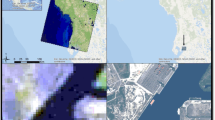Abstract
The objective of this article is to propose a program for the integrated coastal zone management that is required to stimulate and guide sustainable development of the Mediterranean coastal zone of Turkey.
Improved data collection, quality control, analysis, and data management will provide a firm basis for future scientific understanding of the East Mediterranean coast of Turkey and will support long-term management. Various innovative procedures were proposed for a promising ecosystem-based approach to manage coastal wetlands in the Mediterranean: remote data acquisition with new technologies; environmental quality monitoring program that will provide a baseline for monitoring; linking a Geographic Information System (GIS) with natural resource management decision routines in the context of operational wetlands, fisheries, tourism management system; environmental sensitivity analysis to ensure that permitted developments are environmentally sustainable; and use of natural species to restore the wetlands and coastal dunes and sustain the system processes. The proposed management scheme will benefit the scientific community in the Mediterranean and the management/planning community in Eastern Turkey.
Similar content being viewed by others
Author information
Authors and Affiliations
Rights and permissions
About this article
Cite this article
BERBEROGLU, S. Sustainable Management for the Eastern Mediterranean Coast of Turkey. Environmental Management 31, 0442–0451 (2003). https://doi.org/10.1007/s00267-002-2724-5
Issue Date:
DOI: https://doi.org/10.1007/s00267-002-2724-5




